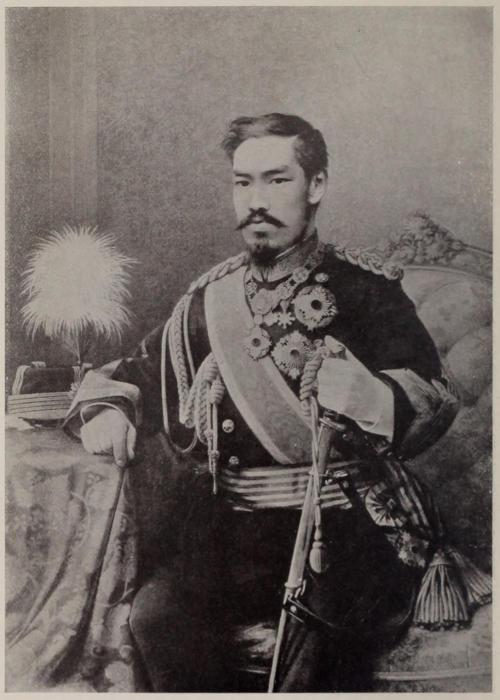MAKERS OF JAPAN

HIS IMPERIAL MAJESTY THE TENNŌ OF JAPAN
MAKERS OF JAPAN
BY
J. MORRIS
MEMBER OF THE JAPAN SOCIETY; AUTHOR OF “WHAT WILL JAPAN DO?”
“ADVANCE, JAPAN!” “JAPAN AND ITS TRADE,” ETC. ETC.
WITH TWENTY-FOUR ILLUSTRATIONS

LONDON
METHUEN & CO.
CHICAGO
A. C. McCLURG & CO.
1906
Modern Japan dates from the advent on the coastof Idzu province of the American squadron underCommodore Perry in 1853. Prior to that time, however,more than one attempt, predestined to failure, had beenmade to bring about the abolition of the feudal system,the agitators, in nearly every case, paying the penaltyof their boldness with their lives. Among the morefamous of these heroes were Fujita Toko, Yoshida Shoin,and Sakuma Shozan,—patriots who shone during thefirst half of the nineteenth century. They were in advanceof their age. They lived in the days of theTokugawa Shogunate, when old ideas on the subject offoreign intercourse still were uppermost. It was dangerousto advocate, as these men did, a policy of complete reconstructionon an imperialistic basis, yet they had thecourage of their opinions, and with might and mainadvocated recourse to Occidental arts and sciences forthe express object of rendering their country strong toresist aggression in every form. Their memory is heldby all their fellow-countrymen in the very highest respect,not more for their self-sacrifice than for the real benefitsthat are seen to have accrued to the people from theirforesight. One lost his life in a terrible earthquakeanother was executed by order of the Sho-gun, and thethird was stabbed to death by Ro-nins, or “Wave-men,”the turbulent spirits of an epoch of social and politicalunrest. All three are esteemed as martyrs in the causeof progress. And although the country was not reopened,after its voluntary seclusion of two centuriesand a half, until the treaty with the United States whichPerry negotiated became operative in 1854, many surreptitiousefforts had been made to obtain a footing inthe Japanese empire, between the time of the East IndiaCompany’s withdrawal in 1623 and the appearance of[vi]the “black ships” of the American squadron in KurihamaBay. The Portuguese had found their way to theisles of Japan as early as 1542, and might have remainedthere indefinitely had they not aimed at theacquisition of political power, as well as at the spreadof the Christian religion. Expulsion followed persecution,and the sins of the Portuguese w